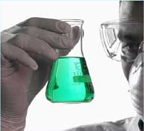
The increased cost to Medicare for the care of a similar patient in a Medicare Advantage plan compared to traditional Medicare is underestimated
Eric Roehm, MD March 2017
Even a relatively small difference in the cost of care can make a difference of billions of dollars since the costs involved are quite large. Medicare Advantage plans covered 31% of all Medicare participants and provided $172 billion of care in 2015.
Medicare Advantage plans: private insurers provide managed care for patients, usually in a health maintenance organization (HMO) or preferred provider organization (PPO). In traditional Medicare, the government runs the insurance program with the option of a private insurer providing a supplemental policy.
The 2016 Medicare Payment Advisory Commission (MedPAC) report to Congress estimated that for similar patients, it is 2% more expensive for the Medicare program when a patient receives care in a Medicare Advantage plan than in traditional Medicare. This probably represents a significant underestimation of the difference for three reasons:
Additional information from the MedPAC 2016 report to Congress suggests the difference is 2.6-3.6%, or higher.
1. The Medicare Payment Advisory Commission’s (MedPAC) 2016 report to Congress provides information indicating the difference is greater. Medicare Advantage plans have strong financial incentives to maximally code the illness intensity of each patient since this directly affects how much money the plans receive for the care of that patient. In research conducted by MedPAC, the relative upcoding of diagnoses was 9% more in Medicare Advantage plans than in traditional Medicare for similar patients in the most recent year assessed. The difference was 8% in the year prior to that. Using these upcoding estimates of 8-9% from the MedPAC studies indicates that the Medicare Advantage plans are 2.6-3.6% more expensive for the government than traditional Medicare.
(Medicare Advantage plans reimbursement is adjusted 5.41% downward by law because of the upcoding. Hence this 5.41% is subtracted from the 8-9%.)
The adjustment described above only compensates for the upcoding escalation that occurs in Medicare Advantage plans compared to traditional Medicare.
MedPAC’s figures do not take into account the ”under coding” of the patients withdrawing from Medicare Advantage plans, which causes an even greater underestimation of the cost of care in Medicare Advantage plans.
2. Medicare Advantage plans provide insurance for a group of patients that are less sick on the average than the patients in traditional Medicare. Each year, approximately 4% of the patients in Medicare Advantage plans disenroll and go to traditional Medicare. The patients that withdraw from Medicare Advantage plans are sicker and more costly to care for than the patients that stay in Medicare Advantage plans. The patients that withdraw from Medicare Advantage plans have medical risk factor indexes that were assessed in the Medicare Advantage plans that don’t fully reflect their subsequent expenses relative to other patients (they were “under coded” by 28%). Hence, traditional Medicare is getting a steady stream of patients with costs that are underestimated by the risk factor codes. This shifting of the under coded group of patients to traditional Medicare from the Medicare Advantage plans results in a further underestimation of the cost of care in Medicare Advantage plans for a similar patient compared with traditional Medicare.
MedPAC’s figures don’t take into account the very expensive patients with a history of frequent hospitalizations who are shunted away from Medicare Advantage plans, resulting in a further underestimation of Medicare Advantage costs.
3. Furthermore, there is a different set of very expensive patients with a history of frequent hospitalizations with costs that will also be underestimated by current risk factors. These patients tend to be shunted away from Medicare Advantage plans at time of enrollment to traditional Medicare. The shifting of expensive, “under coded” patients away from the Medicare Advantage plans has the same effect as upcoding patients remaining in the plans. These patients represent another source of increased costs in Medicare Advantage plans relative to traditional Medicare not accounted for in the MedPAC’s studies on upcoding in Medicare Advantage plans. The effects of the underestimation of these patients need to be added to effects of systemic upcoding of Medicare Advantage plans to fully calculate the increased costs of similar patients in Medicare Advantage plans compared to traditional Medicare.
www.NutritionHeart.com/Medicare-at-Risk
